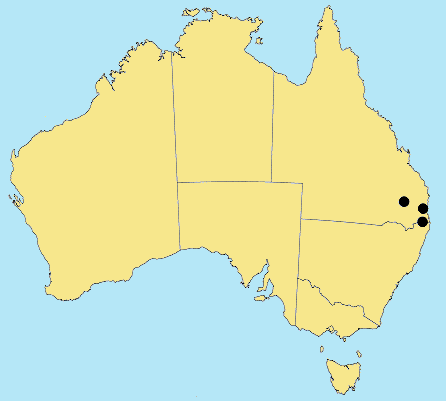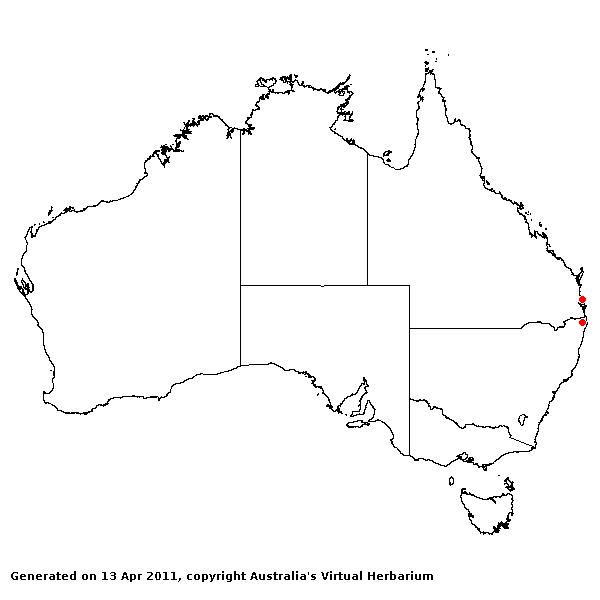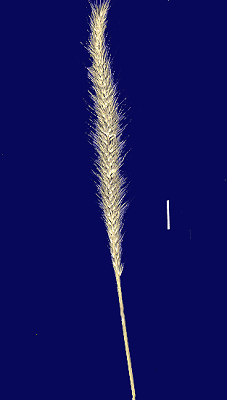Cenchrus thunbergii* (Kunth) Morrone. Rev. Gram. 1: 50 (1829).
Classification. (GPWG 2001) : Subfamily
Panicoideae. Paniceae.
Basionym and/or
Replacement Name: Pennisetum
thunbergii Kunth, Revis. Gramin. 1: 50 (1829); Panicum
hordeiforme (L.) Thunb., Fl. Jap. 46 (1784).
Type of Basionym or
Protologue Information: LT: (LINN-82.5). LT designated by Renvoize in
Cafferty et al., Taxon 49(2): 245 (2000).
Recent synonyms:
P. glabrum.
Key references
(books and floras): [2002] D.Sharp & B.K.Simon, AusGrass, Grasses of
Australia as Pennisetum.
Habit.
Perennial. Rhizomes present, elongated. Stolons absent. Culms erect or
geniculately ascending, 10–150 cm tall. Leaf-sheaths glabrous on surface.
Ligule a fringe of hairs. Leaf-blades flat or convolute, 3–40 cm long, 2–8 mm
wide.
Inflorescence.
Inflorescence solid, a panicle. Panicle linear or oblong, 2–5 cm long.
Spikelets.
Spikelets sessile, 1 in the cluster. Involucre composed of bristles. Fertile
spikelets 2-flowered, the lower floret barren (rarely male), the upper fertile,
comprising 1 basal sterile florets, comprising 1 fertile floret(s), without
rachilla extension, lanceolate or ovate, dorsally compressed, 2.5–5 mm long.
Glumes. Glumes
thinner than fertile lemma. Upper glume oblong or ovate, hyaline, without
keels, 0–1 -nerved. Florets. Basal sterile florets 1, barren, without
significant palea. Lemma of lower sterile floret (25–)33–66(–75) % of length of
spikelet, membranous, 1–3 -nerved, mucronate.
Fertile lemma 2.5–5 mm
long, without keel, 5–7 -nerved. Lemma apex muticous or mucronate. Lodicules
absent or vestigial. Anthers 3. Grain 1.7 mm long.
Continental
Distribution: Africa, Temperate Asia, Tropical Asia, and Australasia.
Australian
Distribution: Queensland.
Queensland:
Moreton, Wide Bay.
Notes.
Introduced. In tropical and subtropical sub-humid woodlands. This unique
species is only known from a few collections in Australia. However, it could
potentially spread in tropical and subtropical regions. Flowers Apr.-June.




